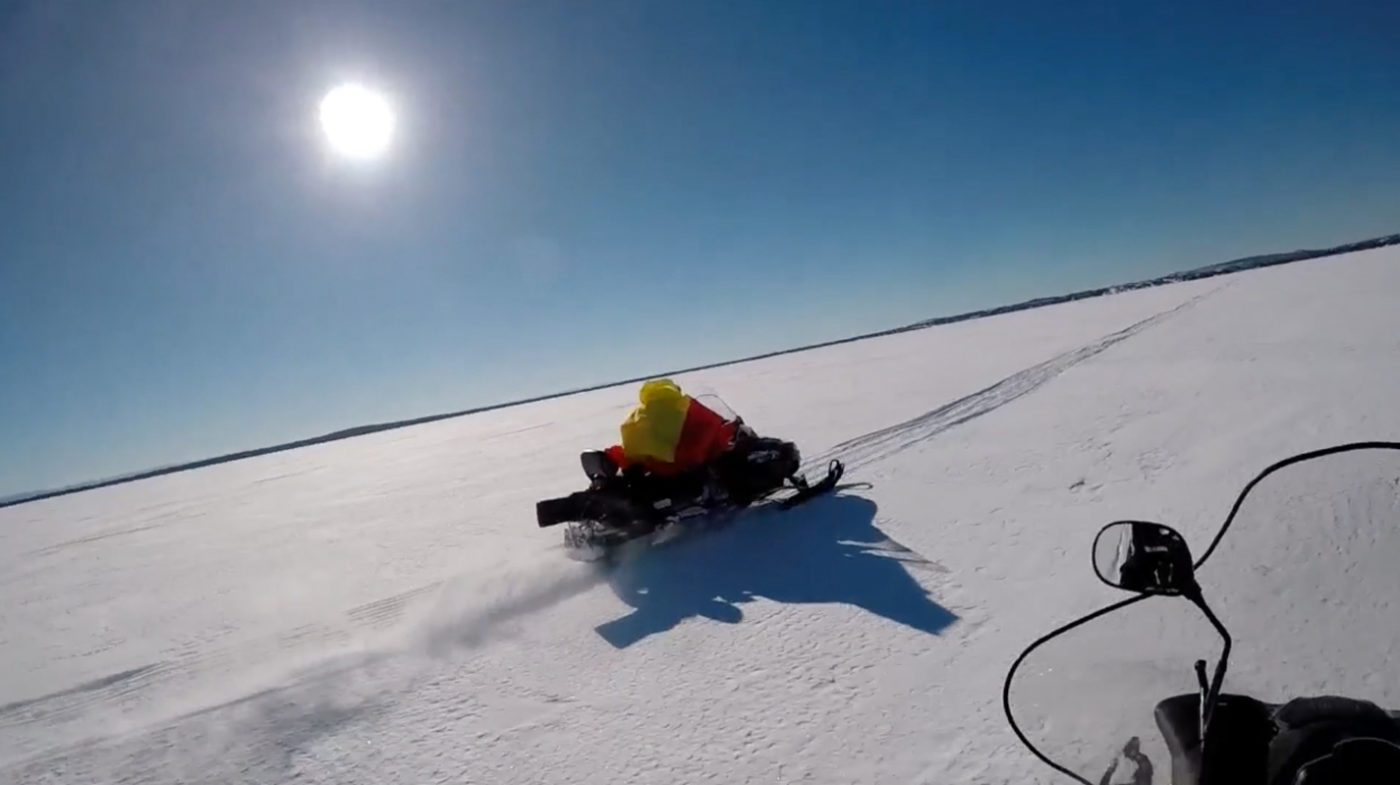KAY BURNS: Inquiry into the Shape of the Earth

Inquiry into the Shape of the Earth
by Kay Burns
Video, 2018
On loop in Eastern Edge Gallery from June 8th – July 7th, 2018
For the month of February 2017, I participated in the North West River Artist Residency at the Labrador Research Station. During the residency I created a performative experiment as a re-enactment of a historical scientific inquiry relevant to the philosophies of its time. The nineteenth-century in England and Europe was a period of increasing wealth and leisure. It was the period in which Darwin offered new insights into the natural world; and an era that spawned pseudo-scientific naturalists in the development of cabinets of curiosity, wunderkammern, and a fascination with all things pertaining to natural history. Within that period Zetetic philosophy was noteworthy. The term ‘Zetetic’ is defined as “a person who proceeds by inquiry; a seeker.” Zetetic philosophy is strongly rooted in the idea of ‘observable phenomena’ as the source of knowledge. Flat earth societies are an offshoot of the pursuits of the Zetetic philosophers of 19th century England. The biggest proponent of Zetetic flat earth ideas was Samuel Rowbotham, an English inventor and writer who in 1881 wrote Zetetic Astronomy: Earth Not a Globe under the pseudonym “Parallax.” During the 1860s and 70s Rowbotham undertook a number of experiments to explore the shape of the earth; the most significant known as the Bedford Canal experiment, achieving results that he claimed proved the earth was flat because his demonstrated results contradicted the mathematical calculation accepted for the world as a sphere.
Underlying this experiment is the question of the established ‘knowledge’ of a spherical earth. At the core of flat earth thinking is a desire to interrogate and question knowledge that we take for granted and/or things that are proclaimed with authority to be accepted incontrovertibly. The exploration of assumed truth and the associated/implied authoritative voice is vital in a contemporary cultural context during this era of ‘post truth’ – a time of fake news and hugely misrepresented facts that many people accept without examination.
Kay Burns is a multidisciplinary artist based in Fogo Island, Newfoundland. Her work includes performance art, sculpture, photography, audio, installation and locative media. Her practice incorporates site-specific responses through a reinterpretation of local histories, mythologies, and the eccentricities of real and invented people who inhabit those places. Her work melds fact and fiction through alternative constructions of place and event, indirectly commenting on the authority associated with the dissemination of information. A significant aspect of Burns’ research and practice since 2002 has been the reinstatement of the defunct Flat Earth Society of Canada through her performance persona, Iris Taylor, entailing presentations of an evolving ‘recruitment lecture’ and the ongoing development of flat earth artifacts. Her performance work also includes the development, curatorship, and presentation of the Museum of the Flat Earth, which is simultaneously a non-profit museum and an evolving art installation as an extension of her art practice. Her artwork has been presented internationally in Reykjavik, Amsterdam, Belfast, New York and Los Angeles; and across Canada from Dawson City to St. John’s. She previously held the post of curator at the Muttart Public Art Gallery in Calgary, and taught in the University of Calgary Fine Arts Department and the Alberta College of Art and Design Media Art Department prior to her move to Newfoundland. Burns continues to undertake freelance writing and curatorial projects, as well as mentorship and visiting teaching roles for various organizations and institutions.